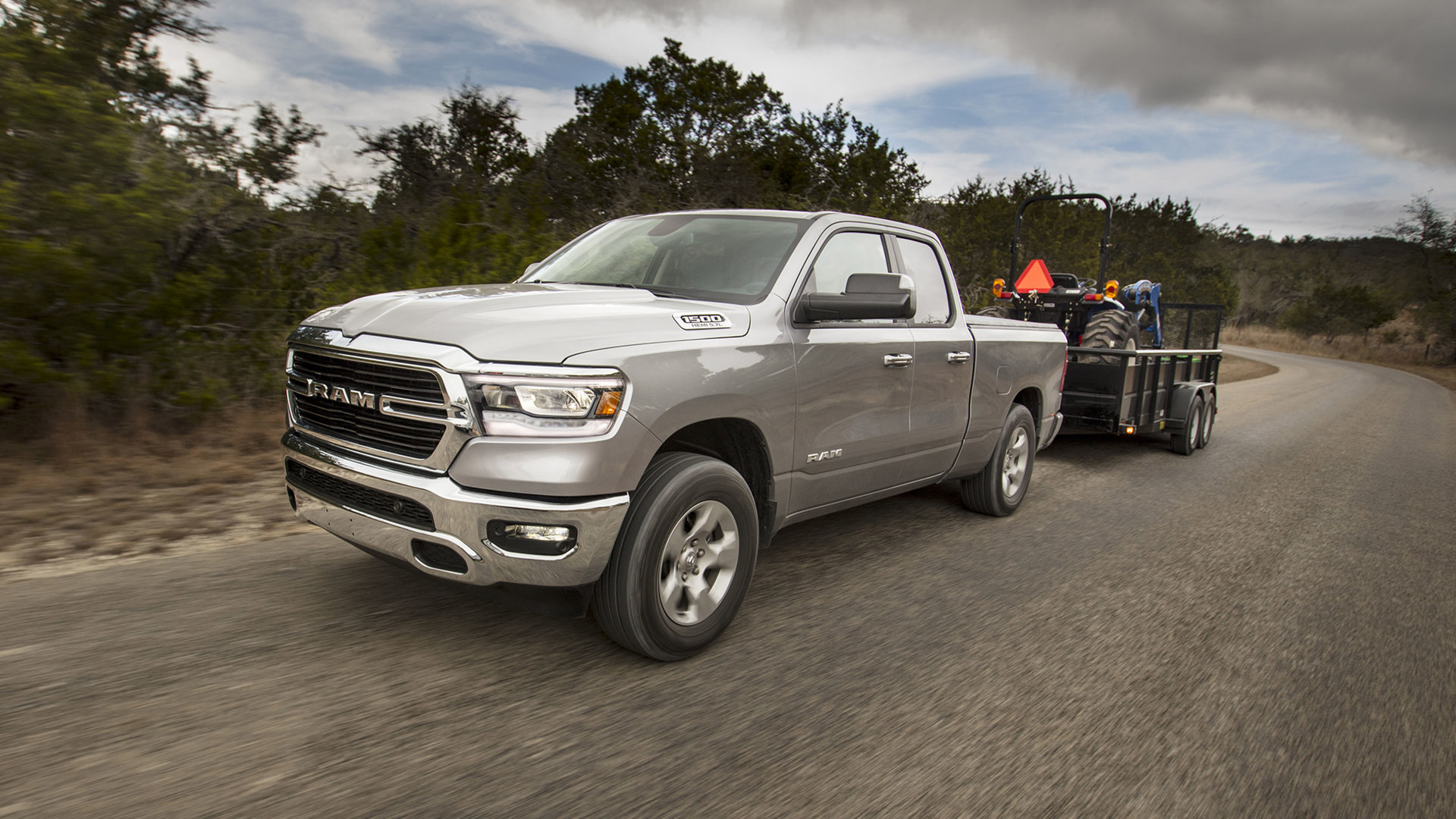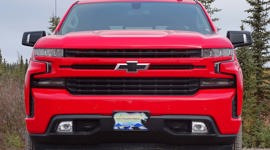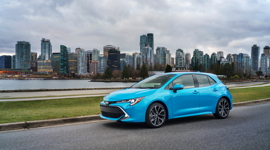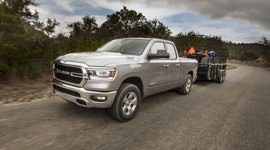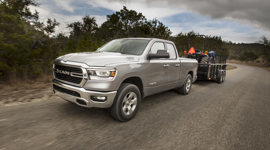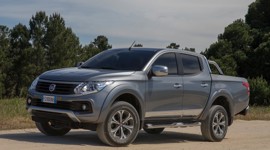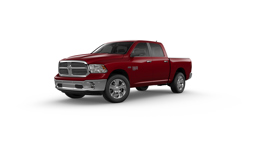No category seems tougher to judge than full-size trucks. Not only is it Canada’s best-selling segment, but most have been recently updated with new styling, engines, and fuel-saving technologies.
Our jury of more than 20 of Canada’s top automotive reviewers considered every single truck in this segment, and ultimately voted for the Ram 1500, defeating four other finalists, which were shortlisted to move onto the final round of voting: Chevrolet Silverado, Ford F-150, GMC Sierra, and Toyota Tundra.
All but the Tundra offer more than one engine, and rather than concentrate on a single powertrain, we looked at each truck lineup overall, judging on such factors as value, performance, efficiency, innovation, user-friendliness, and how well it meets its a truck driver’s needs. For this segment, towing, payload capacity, and off-road capability are weighed heavily, but our jury considers many other important criteria as well.
Blessed with rugged good looks and what we think is the best truck interior on the market, the Ram 1500 offers a 3.6L V6, a 5.7L V8 with fuel-saving cylinder deactivation, and a 3.0L V6 light-duty diesel.
That 3.6L sits midway for torque among the other non-turbocharged V6 models. But at 410 lb-ft of torque, the 5.7L matches or exceeds all V8 competitors, save for GM’s 6.2L, which comes only in the priciest trims. And at 480 lb-ft of torque, Ram’s diesel outstrips the diesels from Ford (440 lb-ft) and GM (460 lb-ft).
When redesigned for 2019, Ram got eTorque, a mild-hybrid motor-generator system standard on the V6 and optional on the V8. It can’t run on electricity alone, but the system adds electric torque during acceleration to smooth out gear changes and improve fuel efficiency. In 4x4 configuration, the eTorque V6 gets an impressive 11.1 L/100 km (city/highway combined) – the most efficient 4x4 V6 among competitors, and even beating Silverado’s turbocharged four-cylinder.
We considered other technologies too, including Ford’s EcoBoost turbocharging, and GM’s new Dynamic Fuel Management (DFM), which takes cylinder deactivation a step further by shutting them off in the most efficient patterns. Equipped with DFM, the Sierra marginally squeaked by Ram’s eTorque V8, but only by a hair: 12.7 L/100 km to 12.8. Other eight-cylinders range from Ford’s 13.5 L/100 km, to Tundra’s thirsty 16.3.
Ram doesn’t have the highest maximum towing capacity – Ford takes that one – but it can go as high as 12,700 lb, and payload has increased over the previous generation to 2,300 lb.
Ram’s available blind spot monitoring system is able to see a trailer, and while Ford’s does as well, you have to program in the trailer’s length. With Ram, you initially turn a corner and the system automatically figures it out. This recently won the AJAC (Automobile Journalists Association of Canada) 2020 Best Technical Innovation award.
The Tundra and Ram come only in extended and crew cab (Ram is expected to add a regular cab, but we don’t know when), while Ford and GM offer three configurations. We like choice but didn’t penalize the first two that much for it because very few consumers buy two-door pickups anymore.
We also had to look long and hard at pricing, because Ram starts out with the highest starting sticker (comparing extended and crew 4x2 among all). We tempered that against value, since even the base work-truck trim includes eTorque and a decent list of features.
The Ram stands alone in using rear coil springs in place of leaf springs, and exclusive in the segment, there’s an optional four-corner adjustable air suspension. As autoTRADER.ca’s Lesley Wimbush said in her review, “With its light, accurate steering, well-damped suspension, and beautifully crafted cabin, our Longhorn tester might as well be a premium luxury sedan.” She noted that “in addition to more sound insulation and improved suspension absorption, the new Ram features active noise cancellation, which works with the sound system and speakers throughout the cabin, and there’s a pair of electronically controlled vibration modules attached to the frame which dispel any vibrations generated by the V8 going into four-cylinder conservation mode.”
In addition to looking good, the interior includes easy-to-use controls, with a space-saving dial for shifting gears, and available 12-inch touchscreen. The Uconnect infotainment system is, we think, the industry’s best. GM and Toyota also use large and simple icons, but we prefer how Uconnect performs; and while Ford’s SYNC is much improved over previous generations, it can be slow and stubborn when it’s cold.
Safety-wise, among our crew-cab competitors as tested by the U.S. Insurance Institute for Highway Safety (IIHS), Ram scored highest. Ford ticked all the highest “Good” boxes for crash testing but got “Poor” for headlights; Silverado and Sierra got “Marginal” for passenger-side overlap; while Tundra – which has been basically unchanged for more than a decade – scored the lowest. Equipped with optional crash prevention and specific headlamps, Ram earned “Top Safety Pick Plus,” the first full-size pickup to ever win IIHS’s top award.
Truck buyers are possibly the most loyal of any automotive segment, and we’re sure our decision will be controversial with fans of the other brands, but we feel the Ram has enough in its favour to earn our 2020 award.
